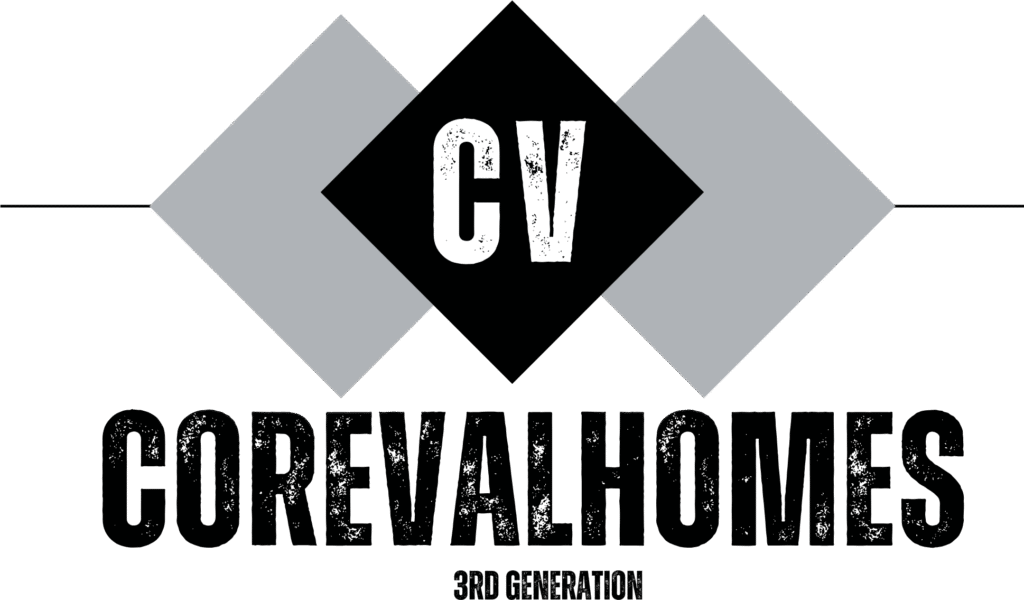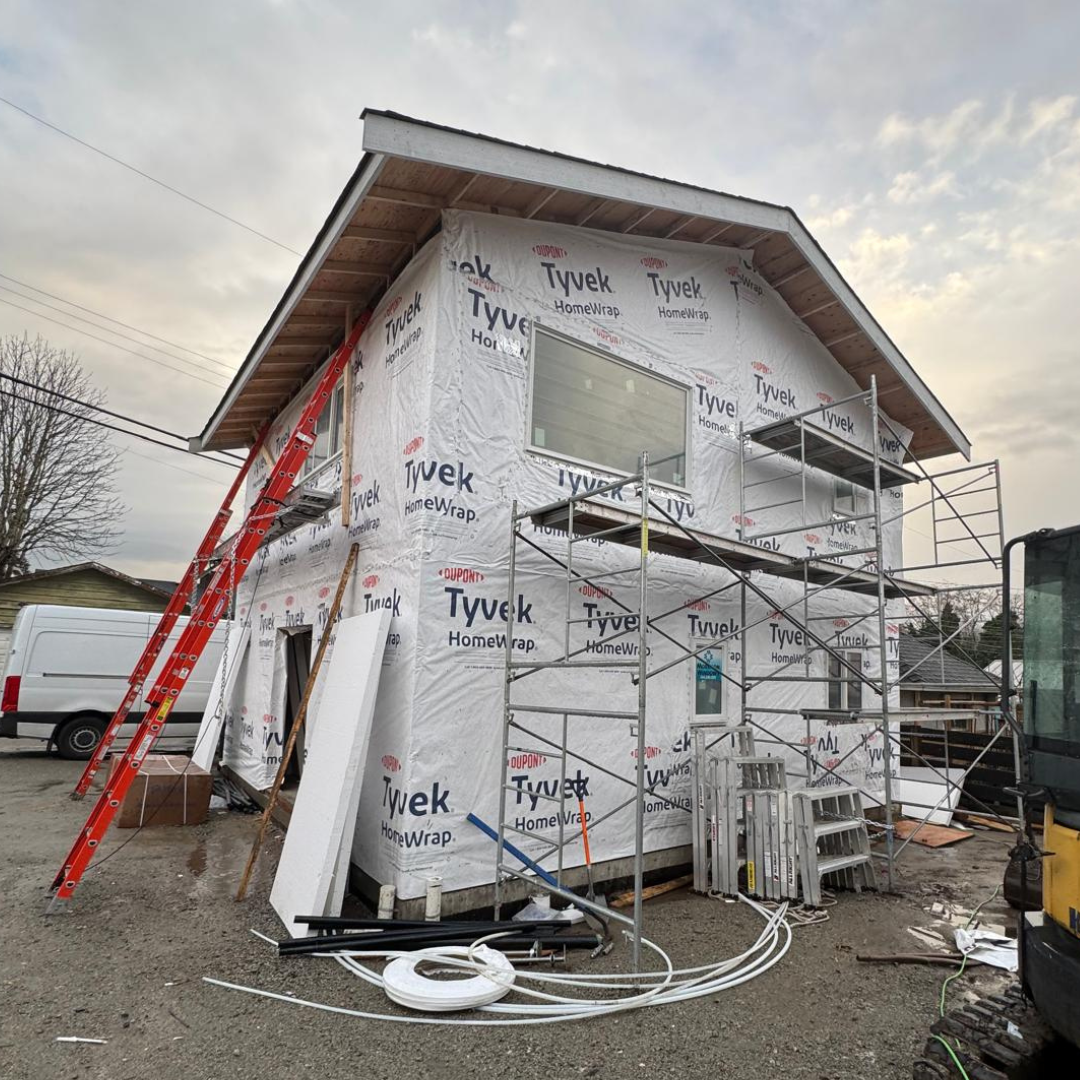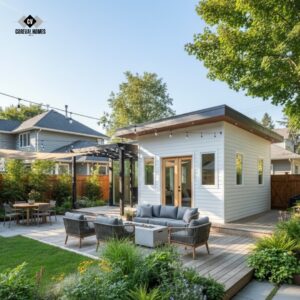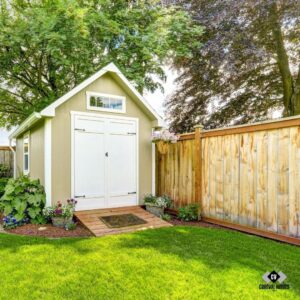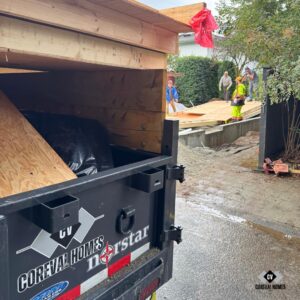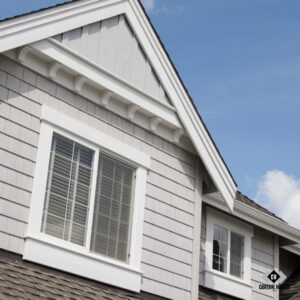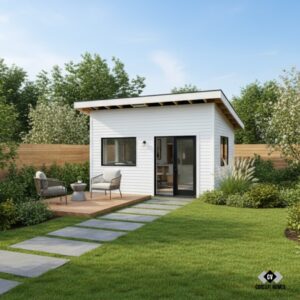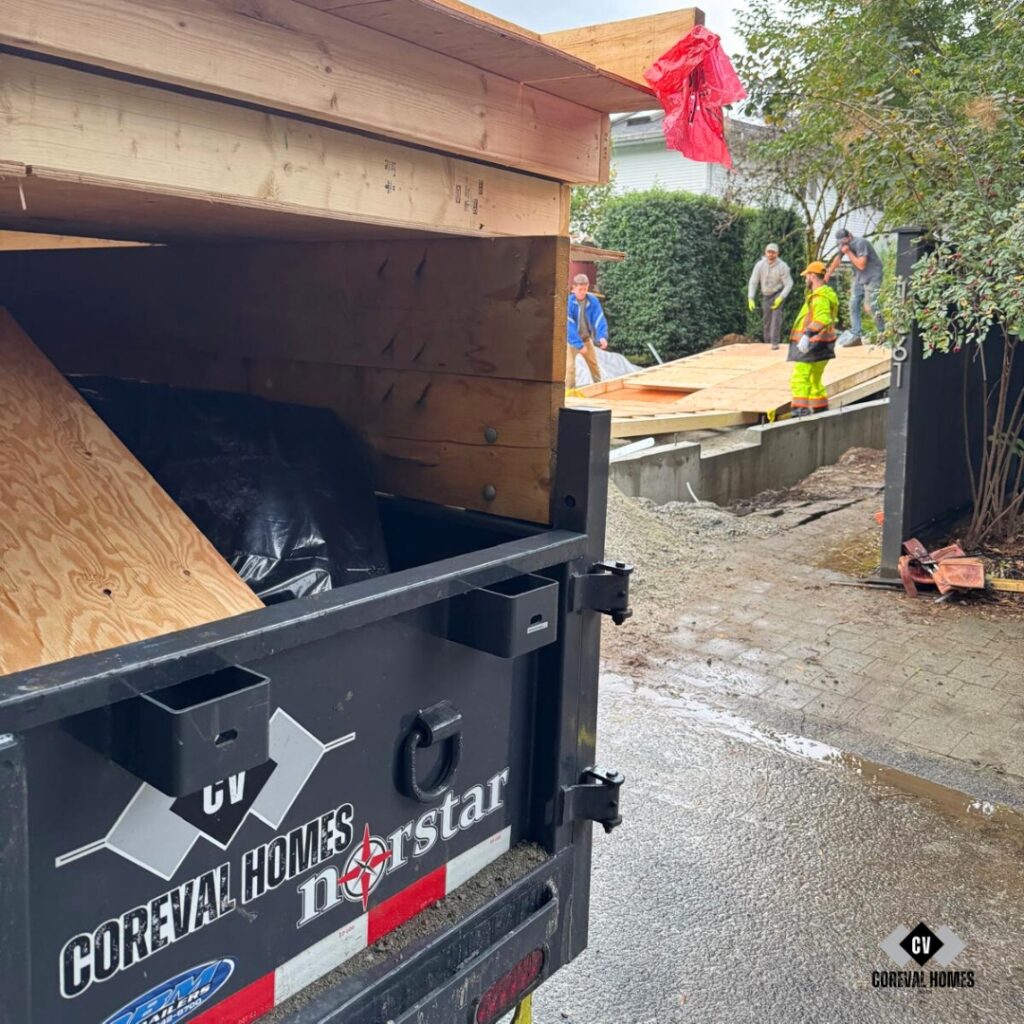As we continue to build and grow our communities, the importance of sustainable practices in residential construction cannot be overstated. In Vancouver, Canada, where environmental consciousness is deeply ingrained, sustainable building materials have become a cornerstone of modern construction.
At CoreVal Homes, we believe that evaluating these materials helps reduce our ecological footprint and enhances the performance and longevity of homes.
Sustainable Building Materials in Residential Construction
Sustainable building materials are crafted from renewable resources or recycled components that require less energy to produce compared to traditional materials. They offer numerous benefits, including reduced environmental impact, lower maintenance costs over time, improved occupant health due to fewer harmful chemicals, and increased energy efficiency.
In Vancouver’s thriving green building sector, locally sourced options like mass timber have gained significant traction. British Columbia is a global leader in mass timber production, which reduces embodied emissions by 25-45% compared to conventional concrete structures. This innovative approach supports local industries while minimizing carbon footprints.
Key Sustainable Materials for Residential Construction
In Vancouver, the adoption of sustainable building materials is transforming the residential construction landscape. These materials not only reduce environmental impact but also enhance performance and longevity. Here’s a detailed look at some of the key sustainable materials being used in residential projects:
Mass Timber
Mass timber is a game-changer in Vancouver’s construction sector, offering significant reductions in embodied carbon emissions—as mentioned, between 25% to 45% compared to traditional concrete structures.
British Columbia is a global leader in mass timber production, and Vancouver has introduced rezoning incentives to encourage its use by allowing taller buildings made from this material. This approach supports local industries while minimizing carbon footprints. For instance, mass timber enables faster construction times; a building shell can be erected on-site within just one week.
Recycled Steel and Concrete
Recycled steel and concrete are gaining traction due to their durability and reduced environmental impact. By reusing existing resources, these materials lower the demand for raw materials significantly, reducing waste sent to landfills—construction waste accounts for about 22.7% of garbage arriving at Vancouver landfills.
In Metro Vancouver alone, buildings emit over four million tonnes of greenhouse gases annually; using recycled materials helps mitigate this issue by lowering embodied emissions during production.
Bamboo Flooring
Bamboo flooring offers both sustainability benefits and aesthetic appeal. It’s fast-growing (reaching maturity in as little as three years), renewable, durable (lasting up to 30 years with proper maintenance), and biodegradable.
Its popularity reflects Vancouver’s commitment to innovative eco-friendly solutions that enhance indoor air quality while reducing reliance on less sustainable hardwoods.
Low-Carbon Concrete Solutions
Vancouver is embracing low-carbon concrete solutions that utilize supplementary cementitious materials (SCMs) like slag or crushed glass. These innovations not only reduce embodied carbon but maintain the structural integrity necessary for modern buildings.
Additionally, optimizing residential structure design enhances energy efficiency further.
These sustainable building practices align with broader trends shaping Vancouver’s green economy—a sector valued at $32 billion globally—and contribute significantly to its goal of becoming the world’s greenest city through initiatives like net-zero energy homes and advanced water conservation systems.
By integrating these eco-friendly options into residential construction projects across Metro Vancouver—where new home registrations dominate B.C.’s housing market—builders can capitalize on emerging trends while contributing positively towards environmental sustainability goals set forth by local authorities.
Performance Metrics: How Do These Materials Measure Up?
When evaluating sustainable building materials for residential projects in Vancouver:
Durability:
- Mass Timber: Offers robust structural integrity with minimal maintenance needs over its lifespan.
- Recycled Steel & Concrete: Known for their strength and resilience against natural disasters.
Energy Efficiency:
- Mass Timber: Provides better thermal insulation compared to traditional methods.
- Low-Carbon Concrete Solutions: Enhance energy efficiency by optimizing structure design.
Environmental Impact:
- All mentioned sustainable materials contribute significantly less greenhouse gas emissions during production than their conventional counterparts.
Lifecycle Impacts
The Life Cycle Assessment (LCA) of these sustainable building materials reveals several key advantages:
- Reduced Carbon Footprint: By using locally sourced or recycled components like mass timber or recycled steel/concrete respectively reduces transportation-related emissions as well as overall resource extraction impacts.
- Lower Maintenance Costs Over Time: Sustainable options often require less upkeep due to inherent durability properties.
- Increased Property Value Due To Energy Efficiency Improvements And Enhanced EPC Ratings For Homes Built With Such Materials
- A healthier indoor environment contributes positively towards occupant well-being by reducing exposure risks associated with chemical pollutants commonly found within traditionally constructed dwellings.
Final Words
Incorporating sustainable building practices into residential construction not only aligns with Vancouver’s ambitious green goals but also provides tangible benefits such as enhanced property value through increased energy efficiency ratings (EPC), and reduced long-term expenses on maintenance & utility bills alike; ultimately contributing towards creating healthier living spaces that resonate well both environmentally & economically speaking!
At CoreVal Homes we’re committed to embracing these eco-friendly solutions ensuring each project reflects our dedication towards sustainability without compromising quality – because when it comes down to choosing between being environmentally conscious versus aesthetically pleasing homes there shouldn’t ever have been any debate at all!
FAQs
1. What role does government policy play in promoting sustainable building materials?
Government policies, such as tax incentives and zoning regulations, significantly encourage the adoption of sustainable building materials by making them more economically viable for builders and homeowners. In Vancouver, specific policies like the Green Building Policy for Rezoning support this shift towards greener construction practices.
2. How do sustainable materials impact property insurance premiums?
Sustainable building materials can lead to lower property insurance premiums due to their durability and resistance to natural disasters. Insurers often offer discounts for homes built with resilient materials that reduce potential damage claims.
3. Can sustainable building practices increase a home’s resale value?
Yes, incorporating sustainable features into a home can significantly boost its resale value by appealing to environmentally conscious buyers who are willing to pay more for eco-friendly properties. This is particularly true in regions like Vancouver where green living is highly valued.
4. Are there any challenges associated with sourcing local sustainable materials?
While sourcing local sustainable materials reduces transportation emissions, it can sometimes be challenging due to supply chain limitations or seasonal availability of certain resources like mass timber or bamboo products.
5. How do smart home technologies integrate with sustainable construction methods?
Smart home technologies complement sustainable construction by optimizing energy efficiency through automated systems that manage heating, cooling, and lighting based on occupancy patterns—further enhancing the environmental benefits of using eco-friendly building materials.
People Also Ask
1. What are some emerging trends in green roofing options for residential homes?
Emerging trends in green roofing include living roofs covered with vegetation which provide insulation while supporting biodiversity; solar roof tiles that integrate photovoltaic panels seamlessly into roofing systems; and cool roofs designed to reflect sunlight reducing urban heat island effects.
2. Can homeowners install these sustainable features themselves without professional help?
While some minor installations might be feasible as DIY projects (like replacing traditional flooring with bamboo), most significant renovations involving structural changes or advanced systems require professional expertise due to safety concerns and warranty requirements on new installations.
3. How does Vancouver’s climate influence the choice of exterior cladding options in residential construction?
Vancouver’s wet climate necessitates exterior cladding choices that are both durable against moisture damage and resistant to mold growth—materials like fiber cement boards or reclaimed wood siding have become popular choices due to their resilience under these conditions.
4. Are there any financial incentives available specifically for homeowners adopting energy-efficient upgrades during renovations?
Yes, programs such as BC Hydro’s Energy Efficiency Rebates offer financial incentives for homeowners upgrading their homes with energy-efficient appliances or insulation during renovations—these rebates help offset initial costs associated with going green.
5. Do local universities play a role in researching new innovative building technologies applicable to residential construction projects locally within British Columbia?
Local universities like UBC (University of British Columbia) actively engage in research related to innovative building technologies including advanced wood products development which supports BC’s forestry sector while contributing knowledge towards more efficient use of renewable resources locally available within British Columbia regionally across Canada too!
